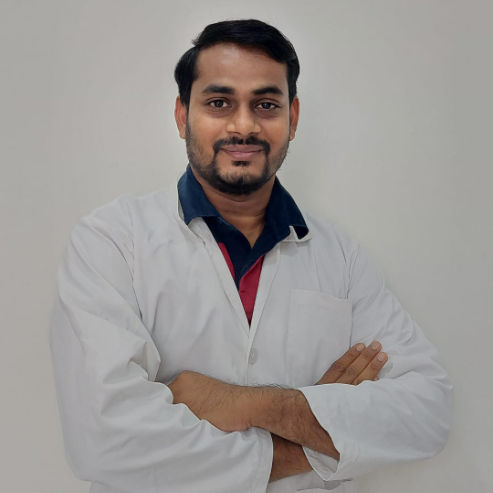Guide to Neurosciences Interventional Neurology/who Real cherod Stroke Care
Learn about Real World Stroke Care, from recognising the BE-FAST signs to advanced treatments like IV thrombolysis and Mechanical Thrombectomy. This guide explains how interventional neurology rapidly removes clots to save brain function.

Written by Dr. Mohammed Kamran
Reviewed by Dr. Rohinipriyanka Pondugula MBBS
Last updated on 27th Oct, 2025

Introduction
If someone around you suddenly has a drooping face, slurred speech, or a weak arm, every minute counts. Stroke is a medical emergency, and advances in interventional neurology mean more people can walk, talk, and live independently after a stroke than ever before. This guide explains how modern neurosciences and neurointerventional teams deliver Real World Stroke Care—from recognising symptoms fast, to using advanced imaging, to removing clots with tiny devices. We’ll translate complex terms into plain language, outline exactly what happens in the emergency room, and show how systems of care (including the WHO’s public-health priorities) work behind the scenes to get patients the right treatment at the right time. You’ll also learn about recovery, prevention, and how to prepare your family for a stroke emergency.
Throughout, we’ll highlight what “neurosciences, interventional, neurology/WHO” really means for you as a patient or
caregiver. If you have risk factors or questions about long-term prevention after a stroke or TIA, you can consult a
doctor online with Apollo 24|7. For urgent symptoms, call your local emergency number immediately—don’t wait.
Consult Top Neurologists for Personalised Advice
Stroke: What You Need to Know Right Now
A stroke is a sudden blockage or burst of blood flow to the brain, requiring immediate emergency intervention.
A stroke happens when blood flow to part of the brain is blocked (ischemic stroke) or when a blood vessel bursts
(haemorrhagic stroke). Ischemic strokes account for about 85% of cases, while haemorrhagic strokes (intracerebral or
subarachnoid haemorrhage) make up the rest. Globally, stroke is a leading cause of death and disability; millions of
people each year die or are left with long-term impairments, underscoring the WHO priority to strengthen stroke
prevention and care systems.
Knowing the signs saves lives. Use BE-FAST:
- Balance: sudden loss of balance
- Eyes: vision trouble in one or both eyes
- Face: one-sided droop
- Arm: weakness or numbness
- Speech: slurred or difficulty speaking
- Time: call emergency services immediately
“Time is brain.” In an untreated large-vessel ischemic stroke, roughly 1.9 million neurons may be lost each minute—
explaining why rapid recognition and hospital arrival are crucial. Interventional neurology, an advanced branch of
neurosciences, offers time-sensitive treatments like clot-busting medication and mechanical thrombectomy to restore
blood flow quickly. Real-world stroke care depends on simple actions—recognise, call, and go—to unlock these life-
saving options.
Unique insight: Teach family and co-workers BE-FAST during a five-minute “drill” at home or work once a quarter.
People who practice recognition and calling emergency services ahead of time act faster in real events. If you’ve had a
TIA (“mini-stroke”) or have persistent neurologic symptoms beyond a short period, consult a doctor online with Apollo
24|7 for evaluation and risk-reduction planning.
What Is Interventional Neurology in Stroke Care?
This speciality uses minimally invasive, catheter-based techniques to treat vascular conditions affecting the brain and
spine.
Interventional neurology (also called neurointerventional surgery or interventional neuroradiology) uses catheters,
wires, and tiny devices threaded through blood vessels to treat conditions of the brain and spine. In stroke, these
specialists work within a wider neurosciences team—ER physicians, neurologists, neurosurgeons, radiologists, nurses,
and rehab professionals—to deliver coordinated, rapid care. This integrated approach aligns with neurology/WHO
public-health goals of equitable access, standardised protocols, and continuous quality improvement.
Common endovascular procedures include:
- Mechanical thrombectomy: physically removing a clot from a blocked brain artery (large vessel occlusion).
- Intra-arterial therapies: targeting clots or vasospasm with medications directly in the artery.
- Aneurysm treatment: coil embolisation or flow-diverting stents for haemorrhagic stroke causes.
- Carotid interventions: stenting or assisting surgical endarterectomy planning to prevent recurrent ischemic events.
Interventional teams rely on advanced imaging (CTA, CT perfusion, MRI) to select the right patients. With modern
selection, mechanical thrombectomy can be offered up to 24 hours from last-known-well in carefully chosen cases,
dramatically improving outcomes compared to medical therapy alone. In Real World Stroke Care, interventional
specialists often coordinate with telestroke neurologists to guide community hospitals through standardised “drip-and-
ship” pathways—giving more people access to lifesaving therapy.
Unique insight: Think of interventional neurology as EMS for your brain’s blood vessels. They don’t just “operate”;
they orchestrate a time-critical system that spans prehospital screening to ICU care—so patients arrive in the right place
at the right time.
Step-by-Step: What Happens When You Reach the Hospital
Immediate imaging confirms the stroke type and location, guiding rapid treatment decisions.
When you arrive by ambulance, a “code stroke” is activated. A team assembles: triage nurse, emergency physician,
neurologist (in-person or via telestroke), radiology technologist, and often the neurointerventionalist on standby. You’ll
go straight to imaging, typically a non-contrast CT to rule out bleeding, followed by CT angiography (CTA) to look for
large vessel occlusions and, in selected cases, CT perfusion to assess salvageable brain tissue.
Treatment decisions flow from those images:
- IV thrombolysis (clot-busting medication) is considered for eligible patients within 4.5 hours of last-known-well, and
sooner is better. - Mechanical thrombectomy is considered if a large, accessible artery is blocked and imaging shows at-risk but viable
brain tissue, often up to 24 hours in selected patients. - Haemorrhagic stroke care focuses on reversing anticoagulants, controlling blood pressure, and determining if an
aneurysm or AVM needs interventional or surgical repair.
Expect rapid, parallel workflows. Lab draws, ECG, and neurological scales like the NIH Stroke Scale (NIHSS) happen
alongside imaging. Quality metrics such as door-to-needle (for thrombolysis) and door-to-groin (for thrombectomy)
times are tracked and publicly reported in many systems to improve Real World Stroke Care outcomes.
Unique insight: Families can help. If possible, bring a list or photo of all medications, especially blood thinners;
knowing this quickly can expand treatment options. If you’re managing vascular risk factors, Apollo 24|7 offers
convenient home collection for common labs like HbA1c and lipid profile—useful for prevention and follow-up after the
acute event.
IV Thrombolysis: Who Qualifies and How It Works
IV thrombolysis, or clot-busting medication, is effective if given quickly after an ischemic stroke, ideally within 4.5
hours.
IV thrombolysis (often alteplase or tenecteplase, per local protocols) dissolves the clot, causing an ischemic stroke. The
classic time window is within 3 hours of last-known-well, with many patients eligible up to 4.5 hours; in specific
scenarios, advanced imaging can guide beyond these windows, but this is centre-dependent and guideline-driven. Major
exclusions include recent major surgery, active bleeding, or very high bleeding risk—your team uses a checklist to
decide safely.
Benefits:
Patients treated earlier are more likely to be independent at 90 days compared with those not treated. Door-to-needle
times under 60 minutes are a national benchmark, and many centres achieve 30 minutes or less.
Risks:
The main concern is symptomatic intracranial haemorrhage, which is uncommon but potentially serious; careful
selection and blood-pressure control help reduce this risk.
Real-world example: National registries show that streamlining prehospital notification, direct-to-CT pathways, and
pharmacist involvement lowers times and improves outcomes across diverse hospitals. In community settings with
telestroke, remote neurologists can approve thrombolysis quickly, enabling “drip-and-ship” to a higher-level centre for
possible thrombectomy.
Mechanical Thrombectomy: Pulling the Clot Out
Thrombectomy physically removes large clots from brain arteries, drastically improving recovery for large vessel
occlusions.
Mechanical thrombectomy is a game-changer for large vessel occlusions (LVOs) in arteries like the internal carotid or
proximal middle cerebral artery. Using a catheter inserted through the wrist or groin, interventionalists deploy devices—
stent retrievers or aspiration catheters—to remove the clot and restore blood flow. Multiple landmark trials show
significantly better outcomes when thrombectomy is performed quickly in eligible patients; with advanced imaging
selection, benefits extend up to 24 hours from last-known-well.
Who is eligible?
- Confirmed LVO on CTA/MRA.
- Significant neurological deficits (often NIHSS moderate to severe).
- Imaging that shows salvageable tissue (core/penumbra mismatch) via CT perfusion or MRI.
What to expect:
- Anaesthesia may be conscious sedation or general anaesthesia, determined by patient condition and team preference.
- Procedure times vary, but many cases achieve revascularisation within 30–60 minutes after groin puncture.
- Risks include bleeding at the access site, vessel injury, distal embolisation, or haemorrhagic transformation; overall
complication rates are low in experienced hands.
Real-world insight: Door-in–door-out times from smaller hospitals to comprehensive centres are a critical “hidden”
metric. Programmes that pre-notify the neurointerventional lab and transfer immediately after thrombolysis (when
appropriate) save crucial minutes. Ask your local hospital how they handle LVO transfers—systems that practice this
pathway deliver better outcomes in Real World Stroke Care.
Hemorrhagic Stroke: When It’s a Bleed, Not a Clot
Bleeding strokes require urgent blood pressure control and often endovascular treatment to seal the source of the bleed,
such as an aneurysm.
Haemorrhagic strokes require a different approach. For intracerebral haemorrhage (bleeding into the brain tissue),
priorities include blood-pressure control, reversal of anticoagulation (if applicable), and management of increased
intracranial pressure. For subarachnoid haemorrhage, most often due to a ruptured aneurysm, urgent evaluation by
interventional and neurosurgical teams is critical.
Endovascular options:
- Coil embolisation: tiny coils packed into an aneurysm to prevent re-bleeding.
- Flow-diverting stents: redirect blood flow away from the aneurysm to promote healing.
- Treatment of arteriovenous malformations (AVMs): embolisation to reduce or eliminate abnormal connections.
Interventional choices depend on aneurysm size, shape, and location—and often require collaboration with
neurosurgery to tailor the safest plan. Outcomes improve when care is delivered in centres experienced in both
interventional and surgical techniques.
Unique insight: After a haemorrhagic stroke, preventing complications like vasospasm (narrowing of vessels that can
cause delayed ischaemia) is key. Some centres use intra-arterial therapies for severe vasospasm. Families should ask
about daily monitoring plans and how the team measures and responds to vasospasm risk.
Systems of Care: Getting the Right Patient to the Right Place
Structured systems, including telestroke and transfer protocols, ensure patients reach the most appropriate stroke centre
quickly.
Not every hospital offers 24/7 thrombectomy. Systems of care solve this by organising:
- Primary Stroke Centres (PSC): deliver rapid diagnosis and thrombolysis.
- Comprehensive Stroke Centres (CSC): offer advanced imaging, thrombectomy, neurosurgery, and neurocritical care.
Prehospital scales (e.g., RACE, LAMS) help paramedics recognise suspected LVOs and route patients to CSCs when
feasible. Telestroke links smaller hospitals with stroke experts around the clock, enabling faster decisions. Some cities
use Mobile Stroke Units (ambulances with onboard CT scanners) to start treatment even before reaching the hospital—
improving time-to-treatment and outcomes in select regions.
“Drip-and-ship” refers to giving thrombolysis at the nearest capable hospital, then rapidly transferring to a CSC for
potential thrombectomy if LVO is suspected. This real-world strategy expands access to neurointerventional stroke
treatment without delaying care.
Unique insight: Equity matters. Rural and remote communities benefit most from clear transfer protocols and telehealth
support. Ask your local EMS which stroke centres they use and how LVO triage is handled. Hospitals that audit these
pathways see measurable improvements in disability-free survival.
After the Emergency: Rehab and Recovery
Early, intensive, multidisciplinary rehabilitation is essential for maximising functional recovery following a stroke.
The first 90 days after stroke see the most recovery due to neuroplasticity—the brain’s ability to reorganise and heal.
Early, intensive, multidisciplinary rehabilitation (physical therapy, occupational therapy, speech-language therapy)
maximises function and independence. Goals are personalised, focusing on walking, self-care, communication, and
cognition.
Prevent complications:
- DVT prevention: mobility, compression, and medications as directed.
- Aspiration prevention: swallow screening, diet modifications.
- Mood and cognition: screen for depression and memory/attention challenges; treat proactively.
Measuring progress:
- Modified Rankin Scale (mRS) and other validated tools track functional independence.
- Outpatient therapy, telerehabilitation, and home exercise programmes extend gains.
Unique insight: Schedule your first outpatient stroke clinic visit before discharge. Clarify who coordinates speech
therapy, driving clearance, and return-to-work guidance. If you need lab monitoring (e.g., lipids, HbA1c) for risk
reduction, Apollo 24|7 offers home collection—handy for those with mobility limits during early recovery.
Preventing the Next Stroke: Your Personalised Plan
Aggressive management of vascular risk factors and healthy lifestyle changes are the cornerstones of secondary
prevention.
Secondary prevention starts in the hospital:
- Blood pressure control: the most important modifiable factor globally; targets individualised by your team.
- Diabetes management: control HbA1c; medications and nutrition matter.
- AF-related stroke: anticoagulation when indicated.
- Antiplatelet therapy: aspirin or dual antiplatelets short-term in specific scenarios (e.g., minor stroke/TIA), per
guidelines. - Statins: for most ischemic stroke patients.
- Carotid disease: endarterectomy or stenting in appropriate cases.
Lifestyle pillars:
- Stop smoking and limit alcohol.
- Adopt a heart-healthy eating pattern (e.g., Mediterranean-style).
- Move more—aim for regular, physician-approved activity.
- Manage sleep apnoea; it’s a powerful, often overlooked risk factor.
Unique insight: Make “one change per week.” Sustainable prevention beats crash efforts. Your clinician can personalise
targets; if your condition does not improve after trying these methods, book a physical visit to a doctor with Apollo 24|
7. Regular labs, medication reviews, and remote BP monitoring are the backbone of durable stroke prevention.
What to Expect as a Patient or Caregiver
Patients and caregivers should expect shared decision-making regarding treatment options and active involvement in
goal setting for recovery.
Emergency decisions happen fast, but shared decision-making matters. Teams explain the likely benefits and risks of
thrombolysis and thrombectomy, tailored to your imaging and clinical status. Costs vary by region and insurance; ask
to speak with a case manager about coverage and rehabilitation options early.
Set realistic goals:
- Many patients treated with IV thrombolysis and/or thrombectomy return to independence.
- Some will need temporary or long-term support; early rehab planning improves outcomes.
- Caregivers are part of the team—ask for training in mobility, communication strategies, and medication management.
Unique insight: Keep a “stroke notebook”: contacts, medication lists, therapy goals, and questions for clinic visits. It
helps you spot trends, celebrate progress, and coordinate with multiple providers.
Myths vs Facts in Real World Stroke Care
Dispelling common misconceptions helps ensure rapid action and acceptance of life-saving interventions.
- Myth: “Let’s wait and see if it gets better.” Fact: Stroke is a medical emergency. Waiting reduces eligibility for
treatments that could prevent lifelong disability. - Myth: “Young people don’t get strokes.” Fact: Stroke can occur at any age, especially with risk factors like migraines
with aura, clotting disorders, or AF; pregnancy/postpartum also increases risk in some cases. - Myth: “tPA is too dangerous.” Fact: In eligible patients, timely thrombolysis improves the chance of independence. The
risk of bleeding is carefully weighed and minimised by protocols. - Myth: “Thrombectomy is only for big-city hospitals.” Fact: Telestroke and transfer networks expand access; many
community hospitals are part of effective drip-and-ship systems.
Unique insight: Write your emergency plan on a card in your wallet: nearest stroke centre, medications, allergies,
emergency contact, and preferred language. Seconds count.
Choosing a Stroke Center Before You Need One
Knowing the capabilities and quality metrics of local stroke centres helps you prepare for an emergency.
Questions to ask:
- Is your hospital a Primary or Comprehensive Stroke Centre?
- What are your door-to-needle and door-to-groin times?
- Do you have 24/7 access to neurointerventionalists and neurosurgeons?
- Do you offer telestroke for community partners?
Quality metrics that matter:
- Percentage of eligible patients receiving thrombolysis.
- Median time metrics (door-to-needle, door-to-imaging).
- Outcomes data (e.g., mRS at discharge or 90 days, when available).
- Participation in national quality registries.
Unique insight: Keep a list of two nearby stroke centres—one primary, one comprehensive—with addresses and phone
numbers. Share it with family and your workplace.
Case Snapshots: How Interventional Care Changes Lives
These examples demonstrate the profound impact of swift, coordinated interventional and medical care on patient
recovery.
- Large vessel ischemic stroke: A 68-year-old arrives 2 hours after onset with right-side weakness (NIHSS 14). CT: no
bleed; CTA: left M1 occlusion. Receives IV thrombolysis within 35 minutes and is transferred to a CSC. Thrombectomy
restores blood flow on first pass. At 90 days, she walks independently and converses with minimal word-finding
difficulty—an outcome linked to rapid, coordinated care. - Aneurysmal subarachnoid haemorrhage: A 52-year-old with sudden “worst headache of life.” CT shows SAH; CTA
identifies a posterior communicating artery aneurysm. Endovascular coiling is performed; ICU care includes vasospasm
monitoring. He returns to work after 3 months with cognitive rehab support. - Carotid stenting after TIA: A 73-year-old with transient weakness and a carotid ultrasound showing high-grade stenosis.
After multidisciplinary evaluation, carotid stenting is performed; he starts antiplatelet and statin therapy and remains
stroke-free on follow-up.
The Future of Interventional Neurology
Innovations in technology and workflow, particularly AI and portable imaging, promise faster, more equitable stroke
treatment access globally.
The next decade will make Real World Stroke Care even faster and more equitable. AI tools already flag suspected
LVOs on imaging and alert teams ahead of arrival. Portable CT and future “CT-in-ambulance” models are expanding.
Device innovations improve first-pass success in thrombectomy and lower complication rates. On the systems side,
neurology/WHO priorities emphasise scaling proven pathways in low- and middle-income regions to reduce the global
stroke burden.
Unique insight: The biggest “new” technology is often workflow. Hospitals that relentlessly practice stroke simulations,
streamline pharmacy and imaging, and partner with EMS consistently deliver better outcomes—no matter their size.
Conclusion
Interventional neurology has transformed what’s possible after a stroke. By uniting advanced imaging, time-tested medications, and catheter-based procedures, modern neurosciences deliver Real World Stroke Care that gets the right treatment to the right patient at the right time. The most important step, though, still starts with you: learn BE-FAST, call emergency services immediately at the first sign of stroke, and know which stroke centres are nearby. In the hospital, a well-practised system—from telestroke to thrombectomy—can mean the difference between full independence and lifelong disability.
Recovery doesn’t end at discharge. Early, focused rehabilitation harnesses the brain’s ability to heal, and practical prevention steps—blood pressure control, diabetes management, statins or anticoagulation when indicated, and lifestyle changes—lower the risk of a second stroke. If you need help building your prevention plan or managing risk factors, consult a doctor online with Apollo 24|7; for lab monitoring like HbA1c or lipid profile, Apollo 24|7 offers convenient home collection services that fit into your life.
Stroke care is a team sport that spans EMS, emergency medicine, neurology, interventional specialists, surgery, rehab, and—most importantly—patients and families. With clear plans, quick action, and systems that work, more people can get back to the lives they love.
Consult Top Neurologists for Personalised Advice
Consult Top Neurologists for Personalised Advice

Dr. Aditendraditya Singh Bhati
Neurosurgeon
21 Years • MBBS(2004), DNB Neurosurgery(2014); MNAMS; Fellow Skull Base Endoscopy (Italy), Fellow Extended Skull Base ( Weill Cornell, USA), Fellow ZAP-X Radiosurgery. Member of American Association of Neurological Surgeons
Delhi
Apollo Hospitals Indraprastha, Delhi
(100+ Patients)

Dr. Ganeshgouda Majigoudra
Neurologist
10 Years • MBBS, MD ( GENERAL MEDICINE) DM (NEUROLOGY)
Bengaluru
Apollo Clinic, JP nagar, Bengaluru

Dr. E Prabhakar Sastry
General Physician/ Internal Medicine Specialist
40 Years • MD(Internal Medicine)
Manikonda Jagir
Apollo Clinic, Manikonda, Manikonda Jagir
(150+ Patients)

Dr Rajashekar Mummadi
Neurologist
3 Years • MBBS, DNB General Medicine, DRNB Neurology
Hyderabad
Dr Ram's Neuro Clinic, Hyderabad

Dr Debnath Dwaipayan
Neurosurgeon
9 Years • MBBS, MS(Gen. Surgery), DrNB (Neurosurgery)
Delhi
Apollo Hospitals Indraprastha, Delhi
Consult Top Neurologists for Personalised Advice

Dr. Aditendraditya Singh Bhati
Neurosurgeon
21 Years • MBBS(2004), DNB Neurosurgery(2014); MNAMS; Fellow Skull Base Endoscopy (Italy), Fellow Extended Skull Base ( Weill Cornell, USA), Fellow ZAP-X Radiosurgery. Member of American Association of Neurological Surgeons
Delhi
Apollo Hospitals Indraprastha, Delhi
(100+ Patients)

Dr. Ganeshgouda Majigoudra
Neurologist
10 Years • MBBS, MD ( GENERAL MEDICINE) DM (NEUROLOGY)
Bengaluru
Apollo Clinic, JP nagar, Bengaluru

Dr. E Prabhakar Sastry
General Physician/ Internal Medicine Specialist
40 Years • MD(Internal Medicine)
Manikonda Jagir
Apollo Clinic, Manikonda, Manikonda Jagir
(150+ Patients)

Dr Rajashekar Mummadi
Neurologist
3 Years • MBBS, DNB General Medicine, DRNB Neurology
Hyderabad
Dr Ram's Neuro Clinic, Hyderabad

Dr Debnath Dwaipayan
Neurosurgeon
9 Years • MBBS, MS(Gen. Surgery), DrNB (Neurosurgery)
Delhi
Apollo Hospitals Indraprastha, Delhi
More articles from Stroke
Frequently Asked Questions
1) What is interventional neurology?
It’s a subspecialty using minimally invasive, catheter-based techniques to treat brain and spine blood-vessel problems, including neurointerventional stroke treatment such as mechanical thrombectomy.
2) How do I recognise a stroke at home?
Use BE-FAST: Balance problems, Eye changes, Face droop, Arm weakness, Speech difficulty—Time to call emergency services. Even if symptoms improve, seek urgent care; early treatment improves outcomes.
3) Who qualifies for mechanical thrombectomy?
Patients with a large vessel blockage on CTA/MRA, significant symptoms, and imaging showing salvageable brain tissue. Selection depends on time from onset and advanced imaging.
4) Is tPA (IV thrombolysis) safe?
In eligible patients, the benefits of early treatment usually outweigh the risks. Hospitals follow strict protocols to reduce bleeding risk and aim for fast door-to-needle times.
5) How can I prevent another stroke?
Control blood pressure, manage diabetes and cholesterol, avoid smoking, treat atrial fibrillation if present, and follow your medication plan. For personalised guidance, consult a doctor online with Apollo 24|7; consider home collection for tests like HbA1c or lipid profile.




